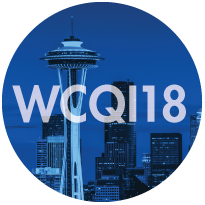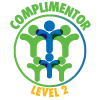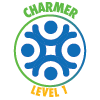Networking at Quality Conferences - 5 Years Ago and 5 Years From Now
618 Posts
Five years ago, ASQ was in its 70th year and we had the WCQI in Milwaukee. At the time, networking ranged from formal receptions and planned events to informal gatherings during breaks and hospitality suites. The traditional practices of live conversations and business card exchanges were prevalent. Most memorable for me was at the 2016 ASQ Awards Reception, when a contingent from Toyota presented their business cards with a respectful bow.
In 2021, the ASQ conferences will be held virtually. This limits the traditional approaches but also expands potential areas for new interactions and exchanges. I am curious about the types of conversation themes and visual application tools that will help with engagement and familiarization. We also need to have a virtual equivalent to a business card exchange.
In 2026, one could speculate that networking events will be a hybrid of virtual and co-located gatherings. The need for inclusion and universal workplaces will necessitate adjustments to permit participation by those who prefer different types of communication methods, along with the option for having transcripts and exchanges recorded.
What are your thoughts for networking events now and in the future? What works, and what would you like to see applied by QMD?
In 2021, the ASQ conferences will be held virtually. This limits the traditional approaches but also expands potential areas for new interactions and exchanges. I am curious about the types of conversation themes and visual application tools that will help with engagement and familiarization. We also need to have a virtual equivalent to a business card exchange.
In 2026, one could speculate that networking events will be a hybrid of virtual and co-located gatherings. The need for inclusion and universal workplaces will necessitate adjustments to permit participation by those who prefer different types of communication methods, along with the option for having transcripts and exchanges recorded.
What are your thoughts for networking events now and in the future? What works, and what would you like to see applied by QMD?
3 Replies
618 Posts
Hello, Peggy Milz , Douglas Wood , Stephanie Thompson . These are ideas that could be applied toward the planning for a future virtual conference.
62 Posts
Dear Daniel,
This is a most interesting "thinking experiment!"
When I was consulting to Nokia Mobile Phones in the late 1990s, the company was transitioning to a converged technology that would embed personal data assistants (PDAs), with mobile phone technology, a digital camera and graphical software, as well as email and gaming. Today, we think of this as a "smart phone." Fundamental to this digital transformation was the need for this new product to "connect to people" - what Nokia engineers called "humanized technology." Perhaps this is the same concept that we must apply when we consider how we will deliver group training and conferences in the future. People like to have connectivity. As both Mary Parker Follett and Chester Barnard described about 100 years ago, the informalized network and its "group technology" are essential components to stimulate organizational change.
This means that we must have formal, one-way communication, as well as a variety of informal exchange mechanisms. In the Quality 4.0 Summit we have experimented with various communication engagement mechanisms: Also, the ASQ WCQI has had some experiments with a cafe concept as a format for group interaction. IAQ has conducted governance cafe's using remote ways of connecting. I think that that the virtual "business card" exchange has already been developed and I believe that the duplication of it on MyASQ is not very efficient. LinkedIn enables us to share virtual business card and career links. Why can't ASQ just learn to piggy-back on such other capabilities, instead of wasting time duplicating this (rather ineffectively in my mind). After all, who really wants to retype their career information into multiple applications?
ASQ needs to apply a concept that Mary Parker Follett descripted as "reciprocal adjustment" - applying whatever mainstream applications or advances work without redeveloping the wheel.
Whatever the future of technology in meeting or conferencing applications, ASQ should use its events to pioneer experiments to engage and advance the professionals and develop a new body of knowledge that is more appropriate for the coming age than is the current set of technologies that remain firmly anchored in the discovers of the last century in a pre-digital world.
Thanks for raising this issue!
Best regards,
Greg
This is a most interesting "thinking experiment!"
When I was consulting to Nokia Mobile Phones in the late 1990s, the company was transitioning to a converged technology that would embed personal data assistants (PDAs), with mobile phone technology, a digital camera and graphical software, as well as email and gaming. Today, we think of this as a "smart phone." Fundamental to this digital transformation was the need for this new product to "connect to people" - what Nokia engineers called "humanized technology." Perhaps this is the same concept that we must apply when we consider how we will deliver group training and conferences in the future. People like to have connectivity. As both Mary Parker Follett and Chester Barnard described about 100 years ago, the informalized network and its "group technology" are essential components to stimulate organizational change.
This means that we must have formal, one-way communication, as well as a variety of informal exchange mechanisms. In the Quality 4.0 Summit we have experimented with various communication engagement mechanisms: Also, the ASQ WCQI has had some experiments with a cafe concept as a format for group interaction. IAQ has conducted governance cafe's using remote ways of connecting. I think that that the virtual "business card" exchange has already been developed and I believe that the duplication of it on MyASQ is not very efficient. LinkedIn enables us to share virtual business card and career links. Why can't ASQ just learn to piggy-back on such other capabilities, instead of wasting time duplicating this (rather ineffectively in my mind). After all, who really wants to retype their career information into multiple applications?
ASQ needs to apply a concept that Mary Parker Follett descripted as "reciprocal adjustment" - applying whatever mainstream applications or advances work without redeveloping the wheel.
Whatever the future of technology in meeting or conferencing applications, ASQ should use its events to pioneer experiments to engage and advance the professionals and develop a new body of knowledge that is more appropriate for the coming age than is the current set of technologies that remain firmly anchored in the discovers of the last century in a pre-digital world.
Thanks for raising this issue!
Best regards,
Greg
60 Posts
Daniel,
Interesting topic and certainly a great challenge. Have you seen the Clubhouse social network? It is an iOS based App were people can set virtual rooms with and organizer/moderator and he can promote audience members to panelist in order to exchange ideas. People can lie the hand and participate as well. It can be programmed or scheduled. It is audio based. No video.
The only inconvenience is that it requieres and iOS device (iPhone) and the participants can not join, they have to be invited by some one who already is a member. As I understand people can set up private audio chat rooms with the members in the audience in a way to further connect.
Quite interesting, I do not if completely fitted for the task in hand.
Interesting topic and certainly a great challenge. Have you seen the Clubhouse social network? It is an iOS based App were people can set virtual rooms with and organizer/moderator and he can promote audience members to panelist in order to exchange ideas. People can lie the hand and participate as well. It can be programmed or scheduled. It is audio based. No video.
The only inconvenience is that it requieres and iOS device (iPhone) and the participants can not join, they have to be invited by some one who already is a member. As I understand people can set up private audio chat rooms with the members in the audience in a way to further connect.
Quite interesting, I do not if completely fitted for the task in hand.








